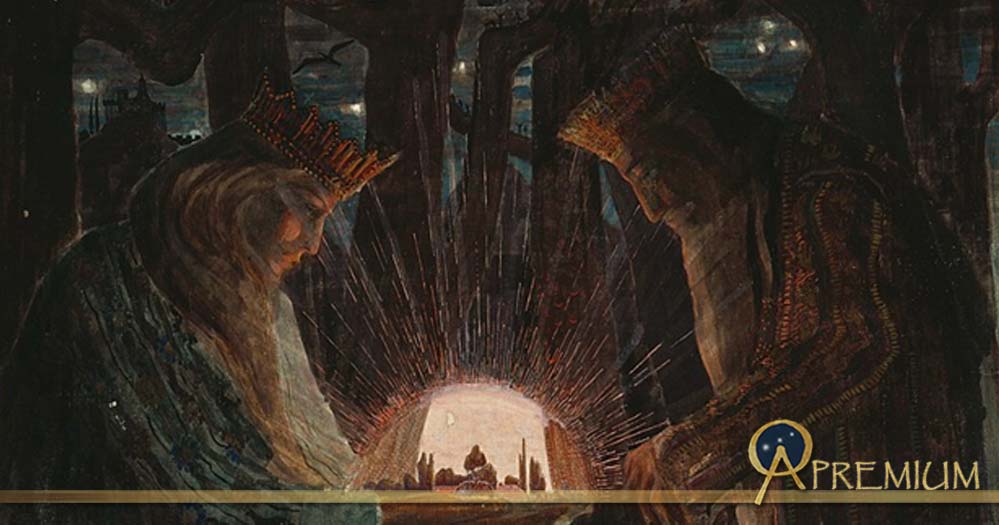The Mabinogion: Ancient Welsh Tales Bridging the Celtic Mindset and the Otherworld
The Mabinogion is a collection of 11 stories from medieval Wales. Although only first committed to manuscript during the 13th century (the oldest surviving fragmentary manuscript dates to circa 1225), the tales are generally accepted as fossilizing an oral tradition that dates back many centuries previous to this. They contain a heady mix of history, pseudo-history, mythology and folklore, and provide our most direct route into the Celtic mindset and worldview of ancient Welsh culture. The stories of The Mabinogion appear in complete form in two 14th century Welsh manuscripts, The White Book of Rhydderch ( Llyfr Gwyn Rhydderch), and The Red Book of Hergest ( Llyfr Goch Hergest). They were all originally separate stories, written by different (unknown) hands, and were only collated into an autonomous group in the 19th century (first published as a complete set in 1849) by Lady Charlotte Guest, who translated the Welsh texts into English, using in part the earlier work of the Welsh antiquarian William Owen Pughe (d.1835).

Beginning of "The Dream of Macsen Wledig" from the White Book of Rhydderch. (CC0)
The Branches of the Mabinogion
The 11 stories are usually split into the four branches: Pwyll, Prince of Dyfed (Pwyll Pendefig Dyfed); Branwen, daughter of Llŷr (Branwen ferch Llŷr); Manawydan, son of Llŷr (Manawydan fab Llŷr); Math, son of Mathonwy (Math fab Mathonwy) and three ‘romances’: The Lady of the Fountain (Chwedl Iarlles Ffynawn); The History of Peredur son of Evrawg (Historia Peredur ab Efrawg); Gereint and Enid (Geraint ac Enid) and supplemented by four further stories of various dates: Culhwch and Olwen (Culhwch ac Olwen); The Dream of Macsen Wledig (Breuddwyd Macsen Wledig); Lludd and Llefelys (Lludd a Llefelys) and The Dream of Rhonabwy (Breuddwyd Rhonabwy).

Peredur Son of Evrawg’ showing the half flaming, half alive tree, unknown artist.
“On the bank of the river he saw a tall tree: from roots to crown one half was aflame and the other was green with leaves.” The quote from History of Peredur Son of Evrawg, describing the tree half aflame and half alive, illustrates well the preternatural quality that resonates through all the stories, where a magical Otherworld imbricates itself consistently into the landscapes of early medieval Wales. For those telling, listening to and reading the stories, this metaphysical overlapping would have represented a legitimate way of describing a past, where mythology and folklore were as authentic realities as the historical narrative. The characters, and their environment, were in physical reality and the Otherworld at the same time with no contradiction.
Like this Preview and want to read on? You can! JOIN US THERE ( with easy, instant access ) and see what you’re missing!! All Premium articles are available in full, with immediate access.
For the price of a cup of coffee, you get this and all the other great benefits at Ancient Origins Premium. And - each time you support AO Premium, you support independent thought and writing.
Neil Rushton is an archaeologist and freelance writer who has published on a wide variety of topics from castle fortifications to folklore. His first book is Set the Controls for the Heart of the Sun
Top Image: Kings' Fairy Tale, 1909, by Mikalojus Konstantinas Čiurlionis (Public Domain)
By Neil Rushton



















